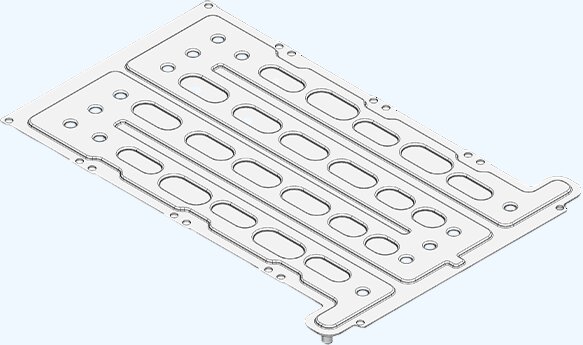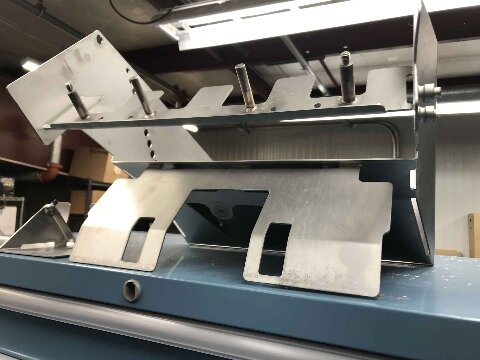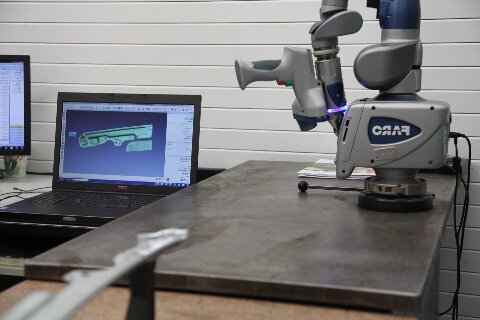Manufacturing demands precision, strength, and reliability in metal joining processes. Heliarc welding meets these requirements through its advanced arc welding technique, which uses tungsten electrodes and inert gas shielding. This method produces exceptional results, particularly with aluminum, stainless steel, and other non-ferrous metals.
The technical advantages and versatility of Heliarc welding have revolutionized industries from aerospace to automotive manufacturing. Let me share insights from our decade of experience in metal fabrication.
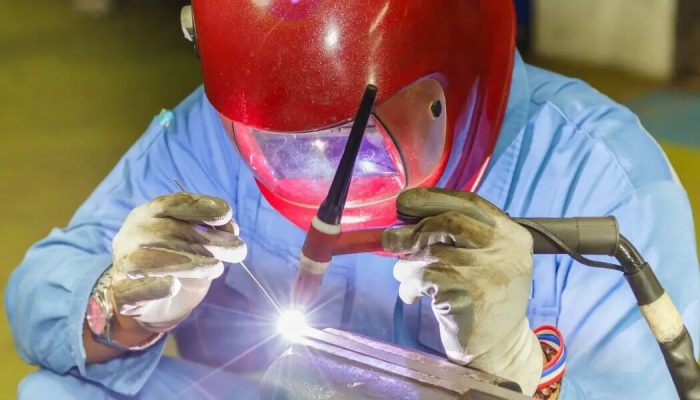
What is Heliarc Welding?
Heliarc welding, technically known as Gas Tungsten Arc Welding (GTAW), employs a non-consumable tungsten electrode to generate an electric arc while using inert gases to shield the weld area. This process, now commonly known as TIG (Tungsten Inert Gas) welding in the industry, produces exceptional welds by maintaining precise control over the welding process.
How Heliarc Welding Works?
Heliarc welding, developed in 1941 by Russell Meredith, represents a sophisticated arc welding technique that creates high-quality metal joints through precise control and superior protection.
During the welding process, a constant-current power supply generates electrical energy. This energy conducts across the arc through a plasma column of highly ionized gas and metal vapors. While most applications use filler metal, some joints can be welded without it in what’s known as autogenous or fusion welds.
The Basics of the Heliarc Process
The technique involves passing high-frequency current through the machine to heat and melt the metal. In some cases, this process creates a strong bond between metals without requiring filler material, known as autogenous welding.
Components of a Heliarc Welding System
The welding system has three main elements: the power source, torch assembly, and gas supply. Modern Heliarc equipment features advanced controls for amperage adjustment, pulse settings, and gas flow regulation.
The Role of Gas in Heliarc Welding
Initially, helium was used, but modern heliarc welding uses argon as the shielding gas. This gas protects the weld area from atmospheric contamination, preventing issues like porosity and fusion defects. Argon proves more efficient due to its higher density and lower flow rate requirements.
Understanding the Arc in Heliarc Welding
The arc forms when an electrical current passes through the tungsten electrode, creating a plasma of highly ionized gas and metal vapors. This process generates sufficient heat to melt and join the base metals while maintaining precise control over the weld quality.
Common Materials
Heliarc welding is versatile because of its compatibility with various metals. The process works exceptionally well with:
- Aluminum alloys
- Stainless steel
- Titanium
- Magnesium
- Copper alloys
Why is Heliarc Welding Important?
This welding method excels in industrial applications, mainly manufacturing ships, cars, and aerospace components. Its precision and versatility make it ideal for working with various metals, including aluminum, stainless steel, magnesium, and exotic alloys.
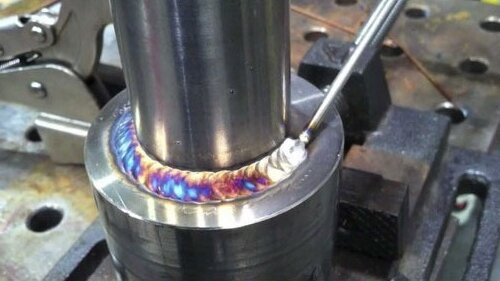
Types of Heliarc Welding Techniques
The evolution of Heliarc welding has led to several specialized techniques, each offering unique advantages for specific applications and materials.
DC Heliarc Welding
Direct current Heliarc welding provides exceptional stability and control during the welding process. When using DC electrode negative (DCEN), the heat distribution focuses approximately 67% on the workpiece and 33% on the electrode, creating deep penetration and efficient welding of most metals.
AC Heliarc Welding
Alternating current Heliarc welding proves essential when working with aluminum and magnesium. The AC cycle alternates between cleaning and penetration phases, effectively removing oxide layers while maintaining proper heat distribution.
Pulsed Heliarc Welding
Pulsed Heliarc welding is an advanced technique in which the amperage alternates between high and low points. This method delivers precise control over heat input while maintaining proper penetration. By reducing overall heat input and minimizing distortion, it produces superior results on thin materials.
Critical Advantages of Heliarc Welding
The exceptional capabilities of Heliarc welding make it a superior choice for demanding welding applications that require precision and quality.
High Precision and Quality
Heliarc welding produces superior-quality welds with remarkable accuracy. The non-consumable tungsten electrode creates clean, precise welds free of defects.
Minimal Distortion and Clean Welds
The process generates minimal spatter and requires minor post-weld cleanup. The narrow heat-affected zone minimizes distortion in the base metal, making it particularly effective for thin materials.
Greater Control Over Heat Input
The welding process offers precise control over heat distribution through adjustable amperage settings. When using pulsed techniques, welders can effectively manage heat input, reducing the risk of warping and distortion in thin materials.
Versatility in Material Types
Heliarc welding demonstrates exceptional versatility across numerous metals and alloys. The technique excels at welding aluminum, stainless steel, nickel alloys, titanium, magnesium, chrome, and exotic metals.
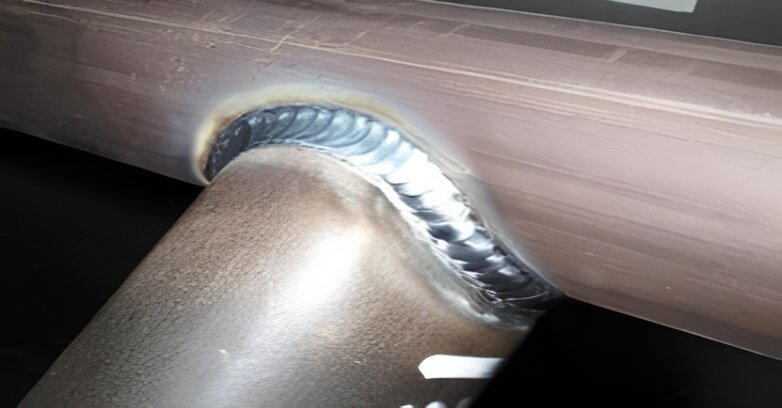
Disadvantages of Heliarc Welding
The complexity and precision of Heliarc welding present several notable challenges that affect its implementation and efficiency in manufacturing processes.
Skill Requirements and Training
Heliarc welding demands exceptional talent and technical expertise from operators. The process requires significant multitasking ability, as welders must simultaneously monitor arc maintenance, machine settings, and timing while maintaining precise control.
Sensitivity to Contamination
Poor gas coverage can lead to serious contamination issues in the weld. The process requires meticulous surface preparation and cleaning to prevent defects, as contaminants like rust, dirt, or oil can compromise weld quality.
Limited Speed for High-Volume Production
The slower welding speeds and the need for precise control and careful attention to detail make it less suitable for high-volume production environments. The process requires additional time for proper setup and preparation, reducing production efficiency.
Heliarc vs. Other Welding Techniques
Each welding technique offers distinct advantages and limitations for specific applications and materials.
Heliarc vs TIG Welding
Heliarc welding and TIG welding are essentially the same process. The term “Heliarc” originated as a brand name that became synonymous with TIG welding, similar to how Kleenex became synonymous with tissues.
Both use a non-consumable tungsten electrode and inert gas shielding. The main historical difference was that Heliarc expressly referred to using helium as the shielding gas, though modern systems commonly use argon.
Heliarc vs. MIG Welding
Heliarc welding offers superior precision and control, though at slower speeds, compared to MIG welding. MIG welding excels at high-volume production and proves easier to learn, making it ideal for beginners.
While MIG welding uses a continuous wire electrode feed, Heliarc employs a non-consumable electrode, resulting in cleaner welds with minimal spatter.
Comparing Heliarc and Stick Welding
Stick welding provides versatility and simplicity at a lower cost and works well with thicker materials. However, Heliarc welding delivers superior weld quality and precision.
Stick welding requires frequent electrode replacement and post-weld slag cleanup, whereas Heliarc welding produces clean welds with minimal post-processing requirements.
Applications of Heliarc Welding
Heliarc welding’s versatility and precision make it invaluable across numerous industries. This technique consistently delivers high-quality metal joining results.
Aerospace Industry
The technique proves essential for joining critical components like aircraft frames, engine parts, and fuel tanks.
Its high precision and strength characteristics ensure structural integrity in aircraft components. The process particularly excels at welding aerospace-grade materials, such as aluminum, titanium, and high-performance alloys.
Automotive Manufacturing
The automotive sector heavily relies on Heliarc welding for various components. Typical applications include exhaust systems, fuel tanks, chassis components, and body panels.
The technique creates clean, precise welds that satisfy structural and aesthetic requirements. Modern vehicles often incorporate aluminum and stainless steel components.
Medical Devices and Equipment
Medical manufacturing demands the highest standards of welding precision. Heliarc welding meets these requirements in producing surgical instruments, implants, and diagnostic devices.
The process creates sanitary welds that resist corrosion. These characteristics prove crucial in medical applications.
Artistic and Jewelry Applications
Heliarc welding opens new possibilities in jewelry production and artistic metalworking. The technique handles materials as thin as 0.2mm with remarkable precision.
Artists use this process to create intricate metal sculptures, and jewelry makers use it to construct delicate sheet metal elements and wire components.
Heliarc Welding in Repair and Maintenance
Repair technicians use Heliarc welding to fix machine shop equipment and boat components. The process excels at rebuilding worn areas on machine parts. This capability often eliminates the need for complete part replacement.
Conclusion
Heliarc welding represents the pinnacle of precision metal joining technology. Its exceptional control and versatility make it irreplaceable in modern manufacturing. The technique continues to deliver superior results across industries, from aerospace components to artistic metalwork.
Do you have questions about implementing Heliarc welding in your production process? Our engineering team specializes in optimizing welding solutions for complex manufacturing challenges. Let’s discuss your specific requirements.
Contact our engineering team today for a free consultation and detailed quote. We’ll help you determine whether Heliarc welding is appropriate for your production goals.
Hey, I'm Kevin Lee

For the past 10 years, I’ve been immersed in various forms of sheet metal fabrication, sharing cool insights here from my experiences across diverse workshops.
Get in touch

Kevin Lee
I have over ten years of professional experience in sheet metal fabrication, specializing in laser cutting, bending, welding, and surface treatment techniques. As the Technical Director at Shengen, I am committed to solving complex manufacturing challenges and driving innovation and quality in each project.

